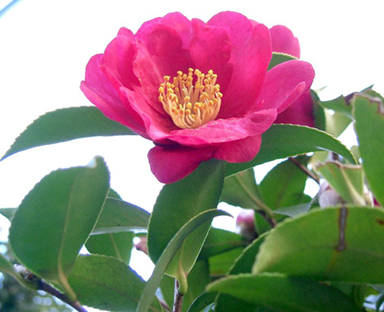Careful choices for success

by Margie Lachman
As my birthday approaches next month and having spent the last three months in a cast and then a brace for a broken wrist, I realize making my garden easier to tend is imperative. Because I love working outside and enjoy my garden, I want to be able to care for it. Spending time in a green space is great for our health so I want to reduce the number of tasks that will be more difficult as the time passes.
Gardening is the second-best way to prevent osteoporosis because of the weight bearing involved. Happily, I have help with some of the work, but I want to do as much as possible myself. Caring for plants that need a lot of attention to prevent or treat disease or insect damage is a concern. Because I choose plants carefully for resistance or edit out existing plants prone to disease or insect damage, I have gradually replaced the ones that demand lots of care.

My roses had almost no blackspot this year due to having resistant varieties and the dry weather in spring and summer. Since I adore roses for their fragrance, I am grateful for that. My hostas had almost no damage from slugs. Many varieties of hostas are available that have thicker leaves that are less tempting to those pests. My dogwood tree is an Asian variety that is resistant to the fungus that plagues our native dogwoods in our rainy springs.
The one concern now are my Camellia japonicas that bloom from late February to April. Every year the blooms are prone to getting blight that turns them brown. They need to be raked up and disposed of in the garbage. So disappointing! But leaving them will put the fungus in the soil which will infect next year’s crop. The buds can be sprayed with Neem oil but that must be done several times each spring. A lot of work each year but the flowers are big beautiful and numerous. Someday I may remove them. Camellia sasanqua which blooms from November to February are resistant to blossom blight and are a favorite for hummingbirds. They are a pleasure to see in winter. Pruning after blooming is all the care they need.
I credit the compost that is spread over the whole garden each spring for the health of my plants. Compost enriches the soil, fertilizes plants, reduces weeds, keeps moisture from evaporating. There is nothing else that can do all that. The first rule of healthy gardening is to feed the soil!
Questions? Email me at margierose2.com@gmail.com.





